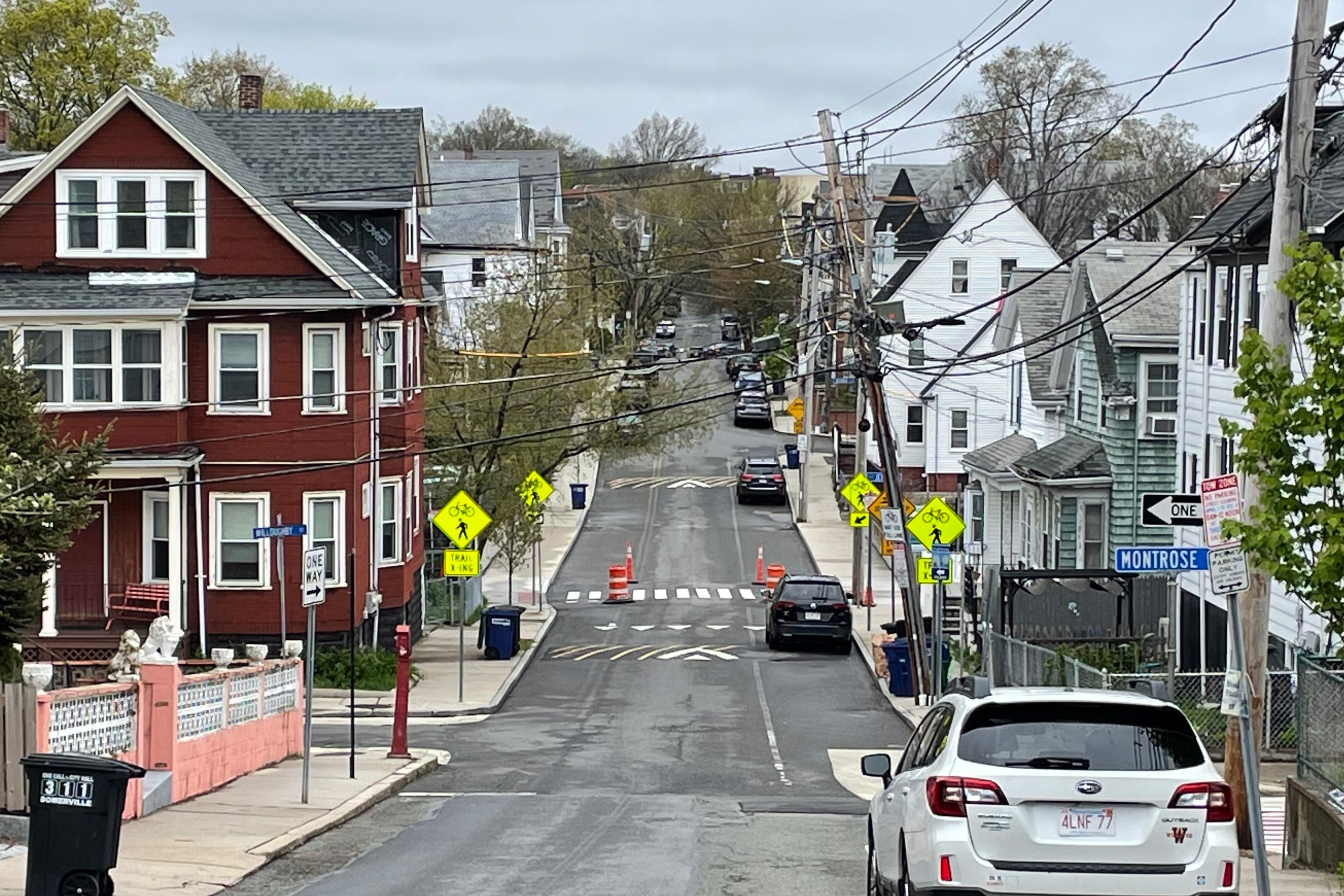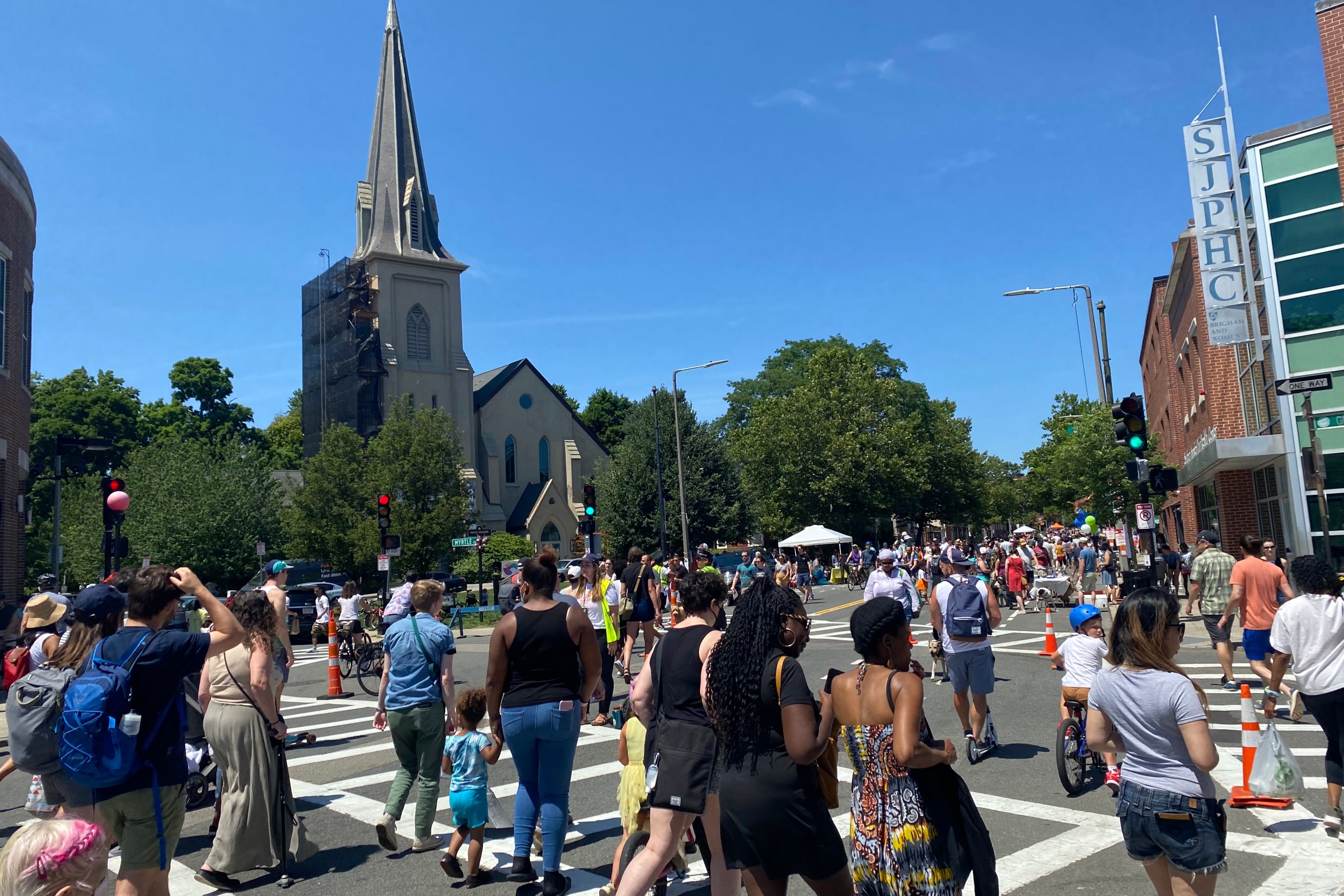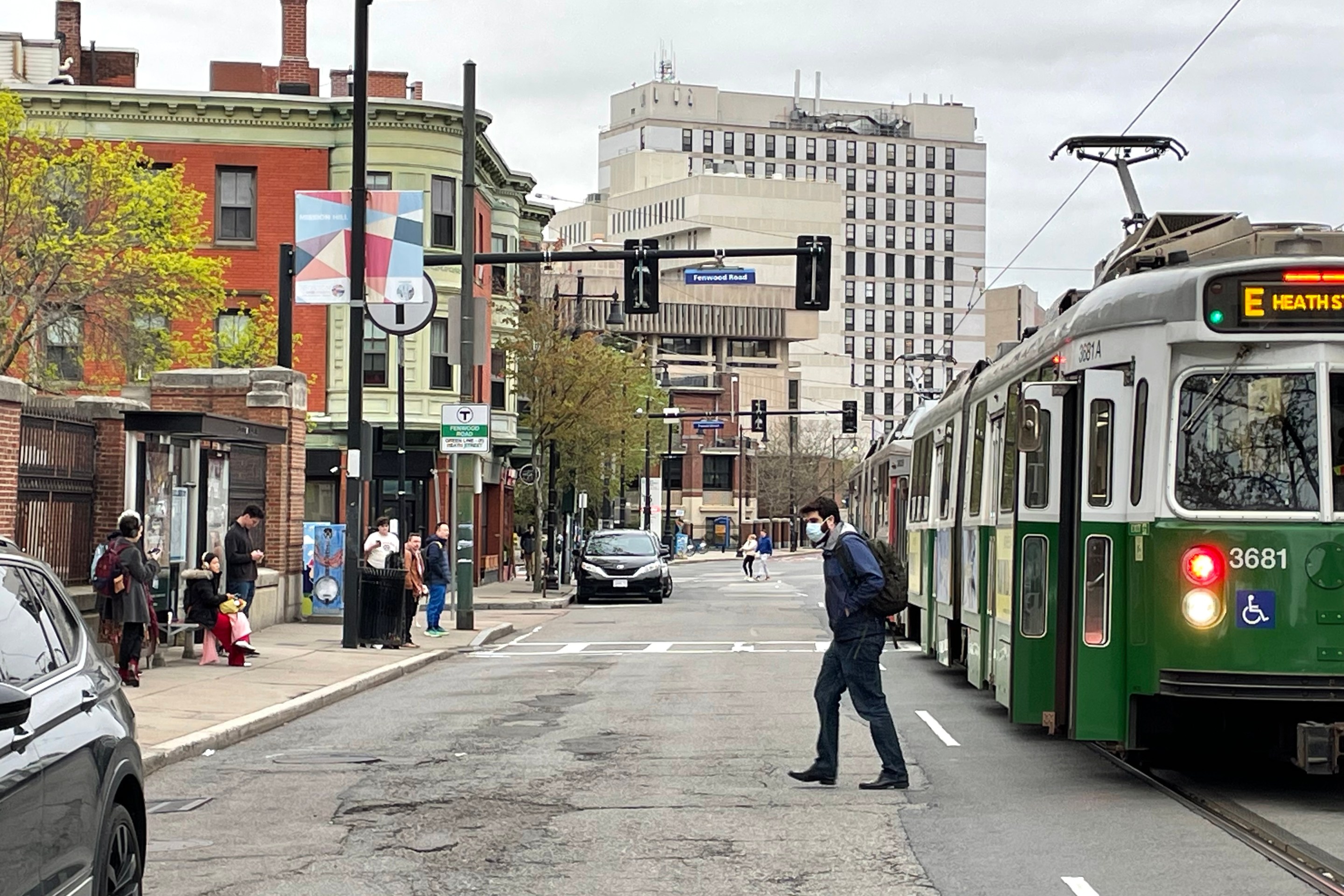Transit Advocates Press State to Build Long-Awaited Blue Line/Red Line Connection
6:55 AM EDT on June 7, 2019
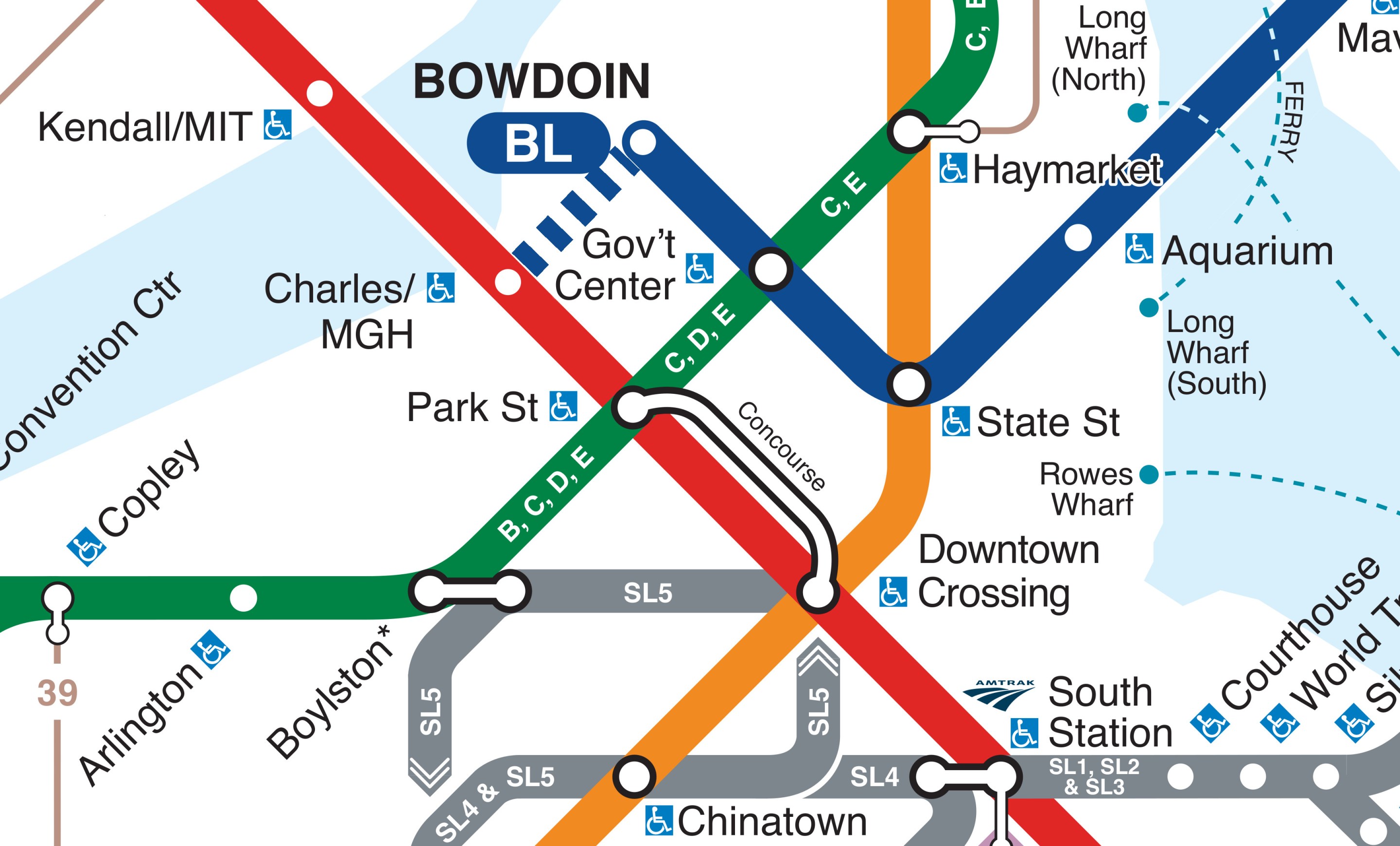
The proposed Red/Blue connection would extend the downtown terminus of the Blue Line a few blocks westward to link with the Red Line, and a major transit destination, at Charles/MGH.
A quarter of a century ago, Massachusetts promised environmentalists a broad array of transit improvements in order to mitigate air pollution impacts from the "Big Dig" highway expansion.
Among those commitments was a short extension to the Blue Line, tunneling a few blocks westward under Cambridge Street, to enable direct transfers to the Red Line at the Charles/MGH Red Line station by 2010.
Nine years after that deadline has passed, Blue Line riders bound for Cambridge or South Station still need to make a time-consuming double-transfer through crowded downtown stations to get to South Station or Cambridge.
But advocates at TransitMatters think the state is finally be ready to put the project under construction, and they're asking their members to submit comments to MassDOT by June 10 in order to make the project a priority in the agency's next capital investment budget.
"The Red and the Blue Lines are the only lines that don’t connect," says Jim Aloisi, a TransitMatters board member and former Secretary of the Massachusetts Department of Transportation. "Connectivity is a huge issue when you’re trying to move people efficiently and entice people to use transit."
Aloisi stresses that the Red/Blue connection isn't just about improving convenience for the Blue Line's riders, but also about improving the systemwide performance of the entire subway network.
"The lack of connection between the Blue and the Red Lines has huge implications for our chronic capacity issues," says Aloisi. "The downtown transfer stations are groaning with capacity issues and crowding," says Aloisi.
Crowded trains at the downtown transfer stations, where commuters hold subway doors open to try and squeeze inside, can cause delays that have ripple effects throughout the entire network. Blue Line riders "are being required to use those stations and make additional trips on and off trains, and they would not have to do that if there were a direct connection," says Aloisi. "The T needs to be thinking operationally about cost-effective ways to relieve some of these capacity constraints; the Red/Blue connection is not a panacea, but it’s part of the solution."
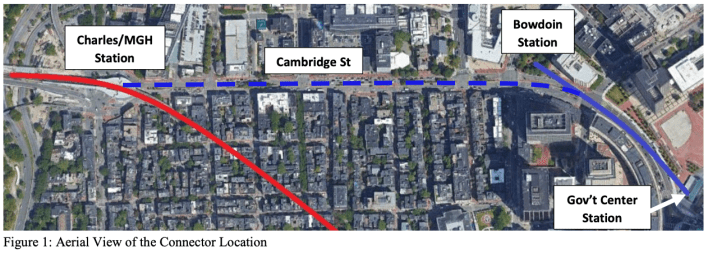
A number of other factors are aligning in favor of the Red/Blue connector. Population and job growth in both the Red Line and Blue Line corridors have exceeded projections, and there are even bigger transit-oriented development projects in the pipeline, including Suffolk Downs, where developers are proposing up to 11 million square feet of new buildings on an abandoned racetrack between two Blue Line stations.
The project's price tag has also come down considerably since it was last examined in 2010. That year, an environmental impact report estimated that the new tunnel would cost at least $748 million and take 5 years to build. But in a new study completed last fall, the MBTA examined an alternative "cut and cover" tunneling method and concluded that the project could be done for as little as $200 million, and that the tunneling could be finished in just 3 years. To put that number in context, the MBTA is aiming to spend roughly $1.5 billion a year just on state-of-good-repair maintenance projects over the next decade.
An additional benefit: the project would require a complete reconstruction of Cambridge Street, identified as a priority bike corridor in the GoBoston 2030 plan, between Charles Circle, where the Longfellow Bridge bikeway ends, and Bowdoin Station, where the Connect Historic Boston bikeway currently dead-ends.
Interestingly, Stephanie Pollack, the Secretary of MassDOT, was an attorney at the Conservation Law Foundation in the early 1990s when the environmental organization negotiated the state's Big Dig mitigation promises, including the Red/Blue connection.
Aloisi is hopeful that the Secretary will seize the opportunity to close the deal at last.
“Getting this done could be a real legacy for her and her administration," says Aloisi. “I have every confidence it will happen eventually because it’s the right thing to do. We’re fighting not just for the capital budget line item, but for a design and engineering contract to be bid and awarded this year.”
Submit comments:
MassDOT is soliciting public comments on their proposed 2020-2024 Capital Investment Plan, which outlines which projects will be funded in the next 5 years, through June 10. Online comments can be submitted at gis.massdot.state.ma.us/cip.
Stay in touch
Sign up for our free newsletter
